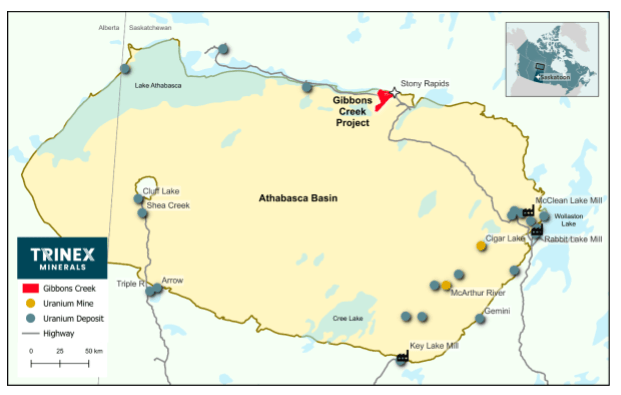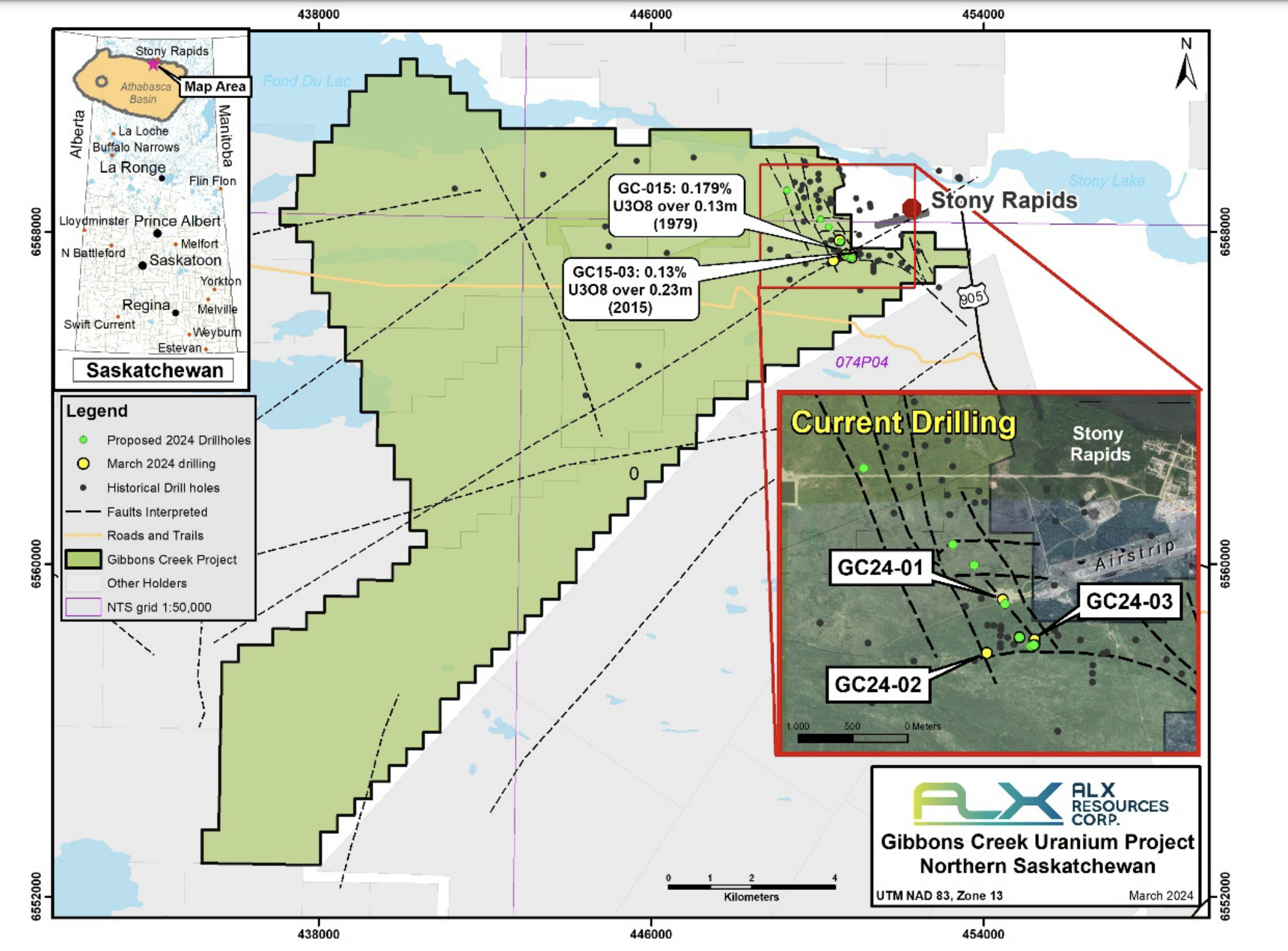Trinex Minerals serves up fresh uranium with first two holes at Gibbons Creek

The second and third holes of Trinex Minerals’ 6-hole program have intersected uranium mineralisation at Gibbons Creek. Pic via Getty Images
- The two holes have intersected uranium mineralisation at or near the unconformity
- These results are based on hand-held scintillometer readings, downhole gamma probe results and visual observation of uranium minerals by Trinex’s geological team
- The company is now planning for an expanded exploration program at Gibbons Creek
Special Report: Drilling at Trinex Minerals’ Gibbons Creek project in Canada’s Athabasca Basin has intersected narrow intervals of uranium mineralisation with more assays expected at the end of April.
Trinex Minerals (ASX:TX3) has been focused on building out its understanding of the Gibbons Creek uranium project since acquiring an initial 51% interest in early March.
The explorer is looking to unlock the full value of the asset, which comprises eight mineral dispositions over an area of 139km2 in Canada’s northern Athabasca Basin, a region known for its unusually large-tonnage and high-grade uranium deposits.
Under the deal, TX3 has the potential to increase to a 75% interest if certain earn-in conditions are satisfied. The company currently has plans to conduct activities on three target areas which have already been identified.

Results based on scintillometer readings
Two of the first three holes drilled as part of the 2024 diamond drilling program at the Airstrip prospect have intersected narrow intervals of uranium mineralisation, with hole GC24-02 returning disseminated blebs of uranium mineralisation 0.8m below the unconformity.
A handheld scintillometer (a device used to measure radioactivity in minerals) measured radioactivity of 220 counts per second while a Mount Sopris 2PGA-1000 downhole gamma probe measured a radiometric peak of 3,321 cps within a 0.6m interval of anomalous radioactivity from 108.9 to 109.5m.
The second hole (GC24-03) was drilled as a 25m westward step-out of unconformity related uranium mineralisation to test the continuity of an interpreted trend between two historical drill holes, 340m apart.
Here, the handheld scintillometer measured a peak radioactivity value of 190cps while the Mount Sopris 2PGA-1000 downhole gamma probe measured a radiometric peak of 2,217 cps within the noted anomalous radioactive interval.
Uranium mineralisation was observed as coatings on fractures in the drill core at 110.2m as well as other fractures between 110.0m and 110.9m.

Drilling and additional exploration to follow
TX3 managing director Will Dix says the Airstrip prospect is a high priority target based on historic results and is pleased to have these encouraging results to guide the next stage of exploration work.
“We look forward to receiving full assay results in April, and in the meantime will be planning for the expanded exploration program across Gibbons Creek when Trinex takes exploration control at the completion of this drill program,” he says.
“We are well funded to take advantage of a strong uranium market and expect to be able to announce additional drilling and further geophysical programs for the coming Canadian summer.”
This article was developed in collaboration with Trinex Minerals, a Stockhead advertiser at the time of publishing.
This article does not constitute financial product advice. You should consider obtaining independent advice before making any financial decisions.
Related Topics

UNLOCK INSIGHTS
Discover the untold stories of emerging ASX stocks.
Daily news and expert analysis, it's free to subscribe.
By proceeding, you confirm you understand that we handle personal information in accordance with our Privacy Policy.








